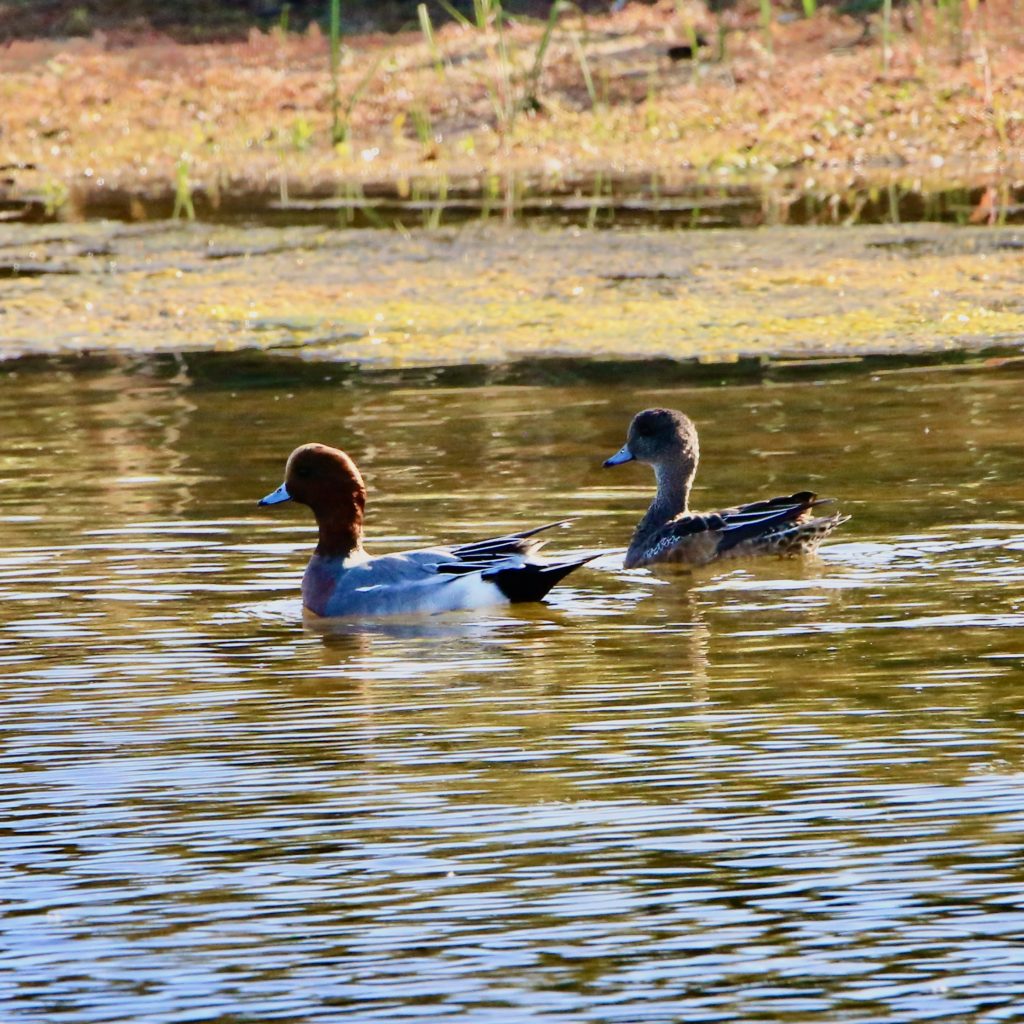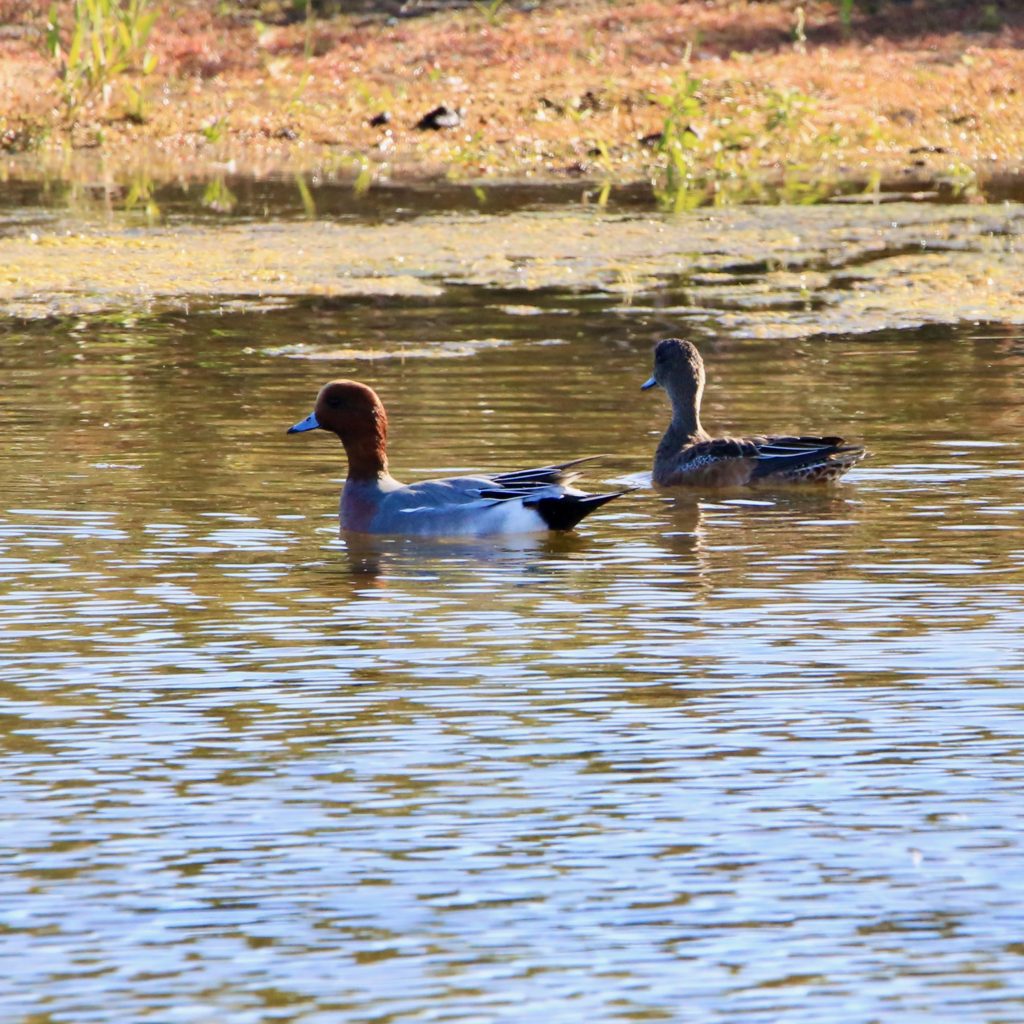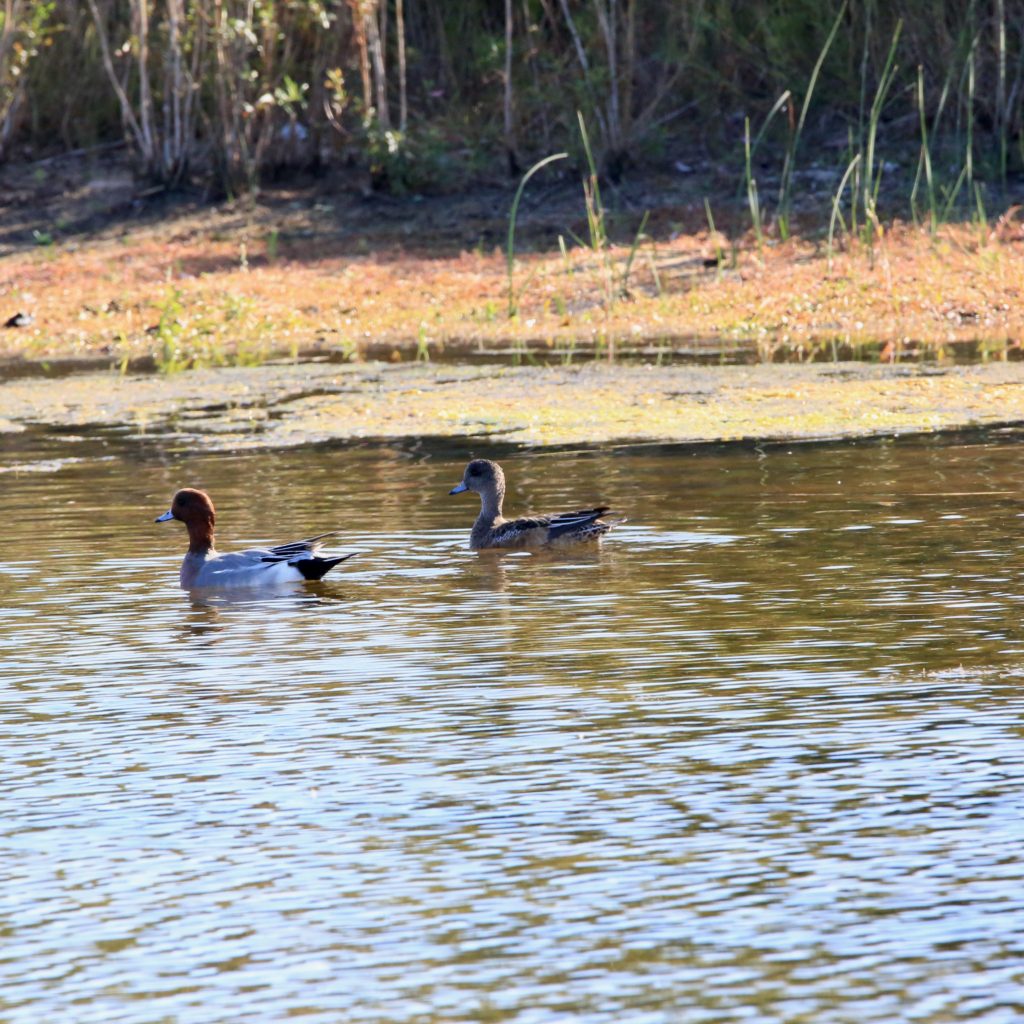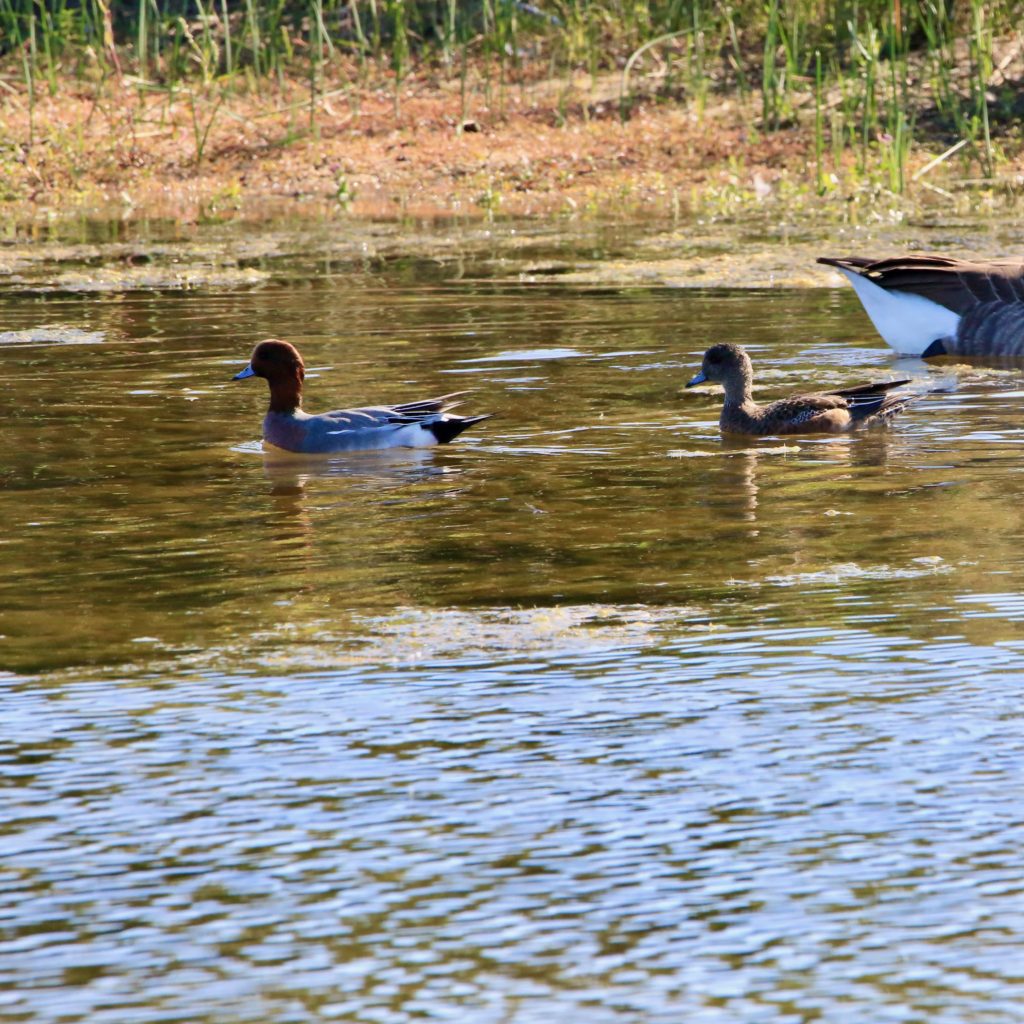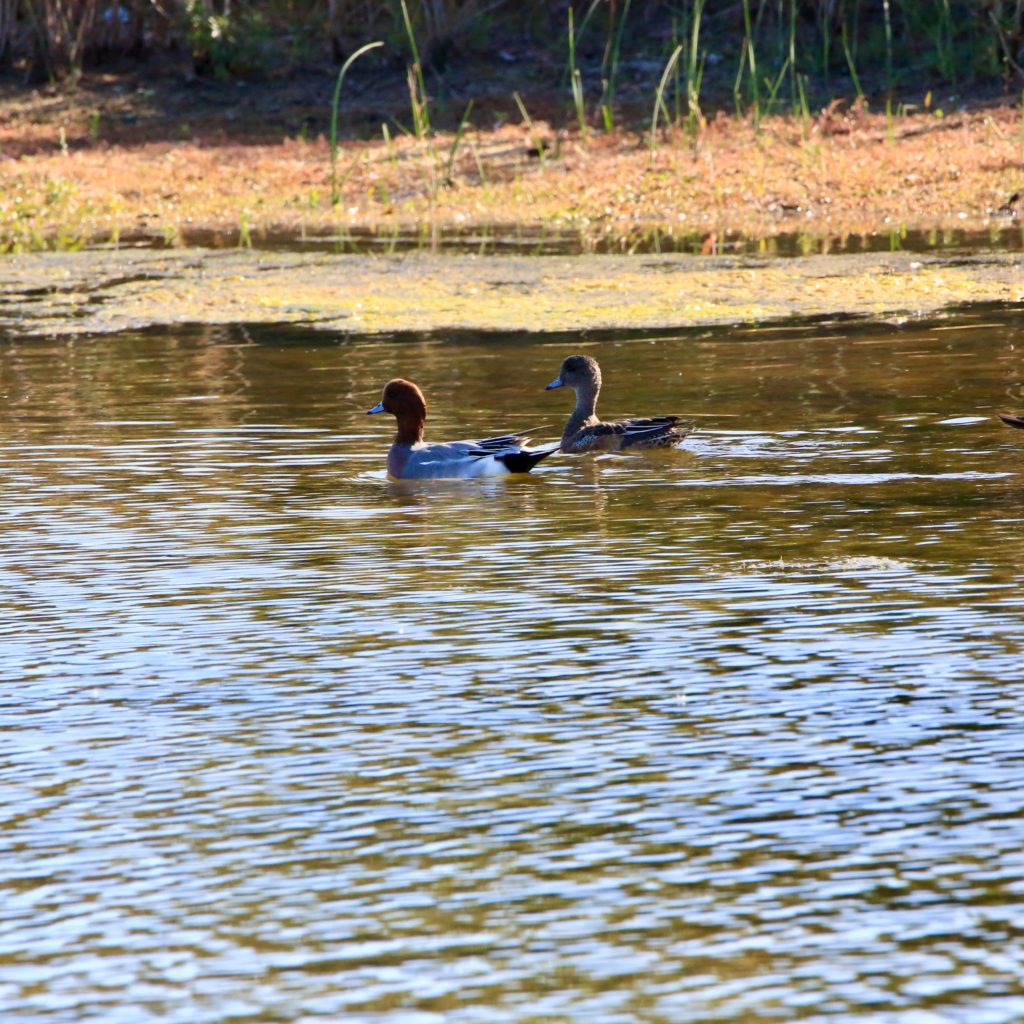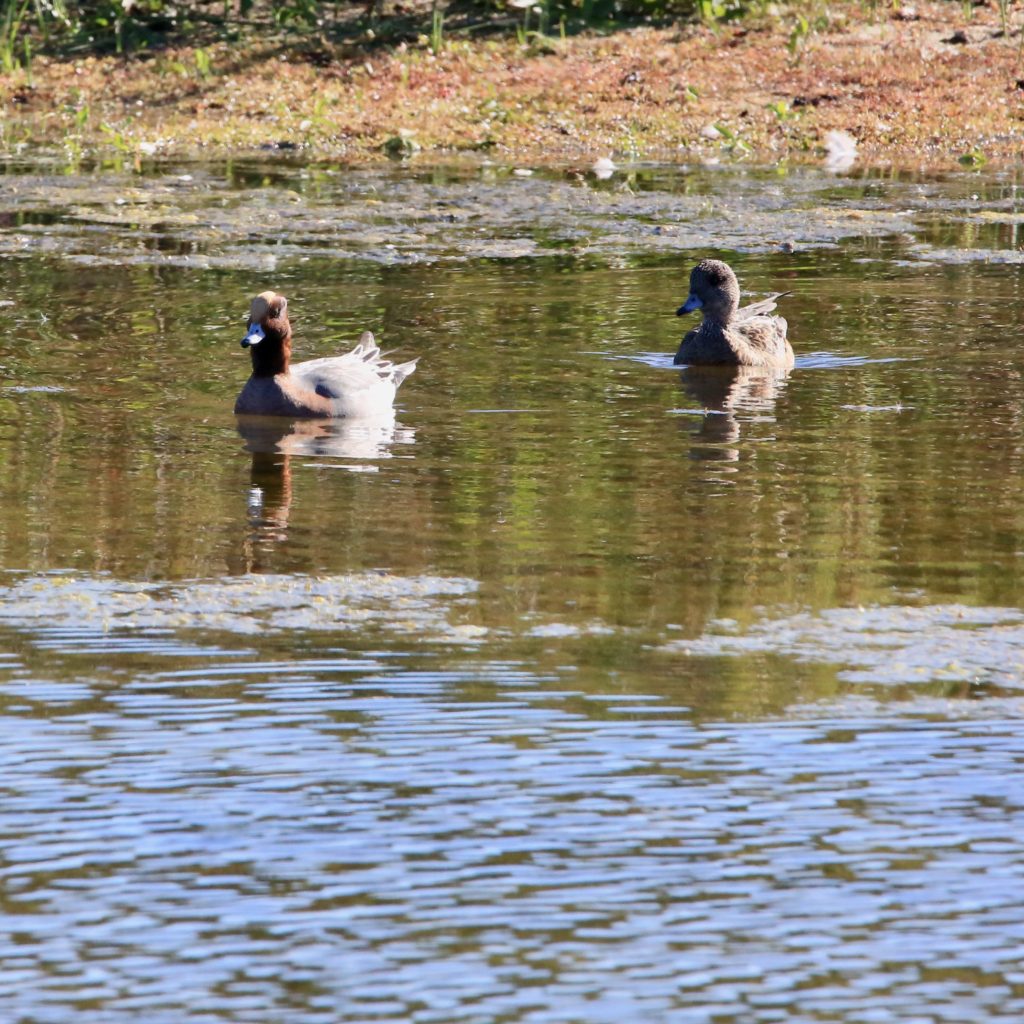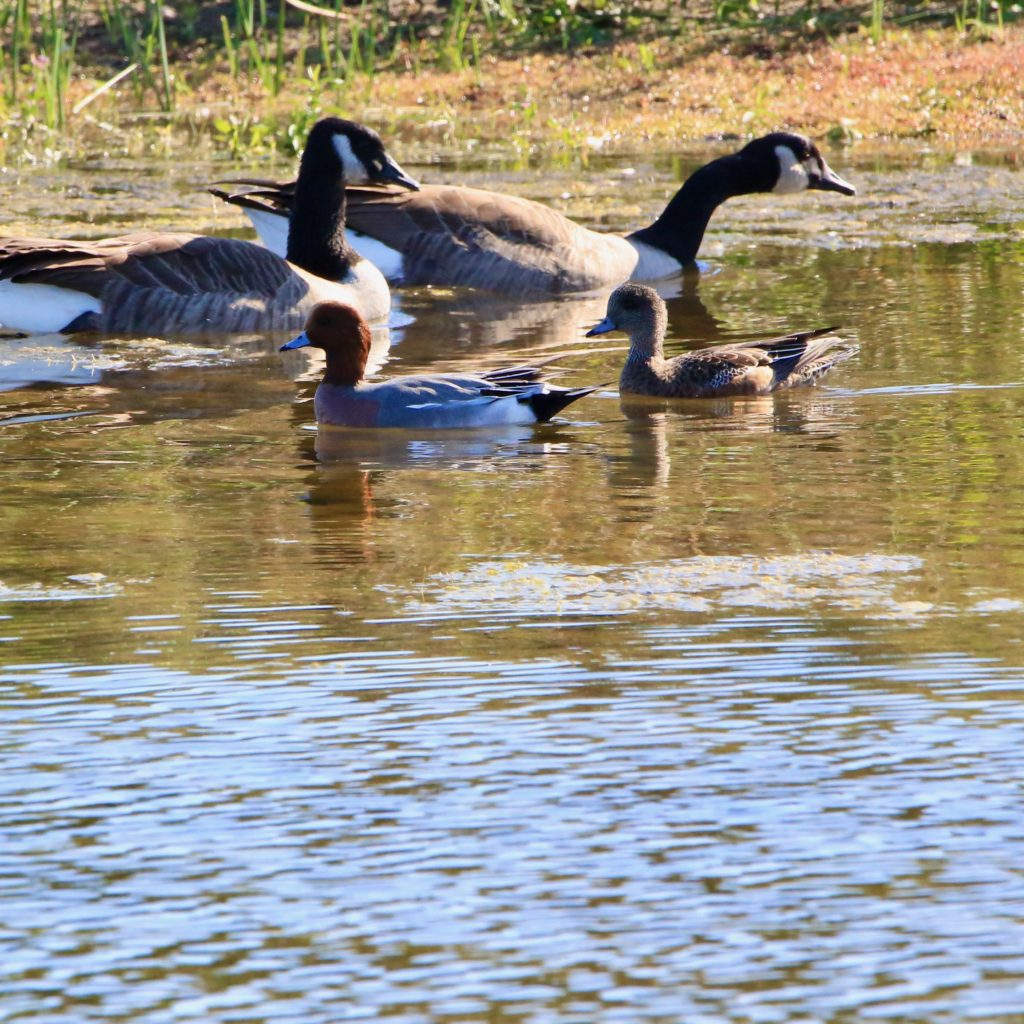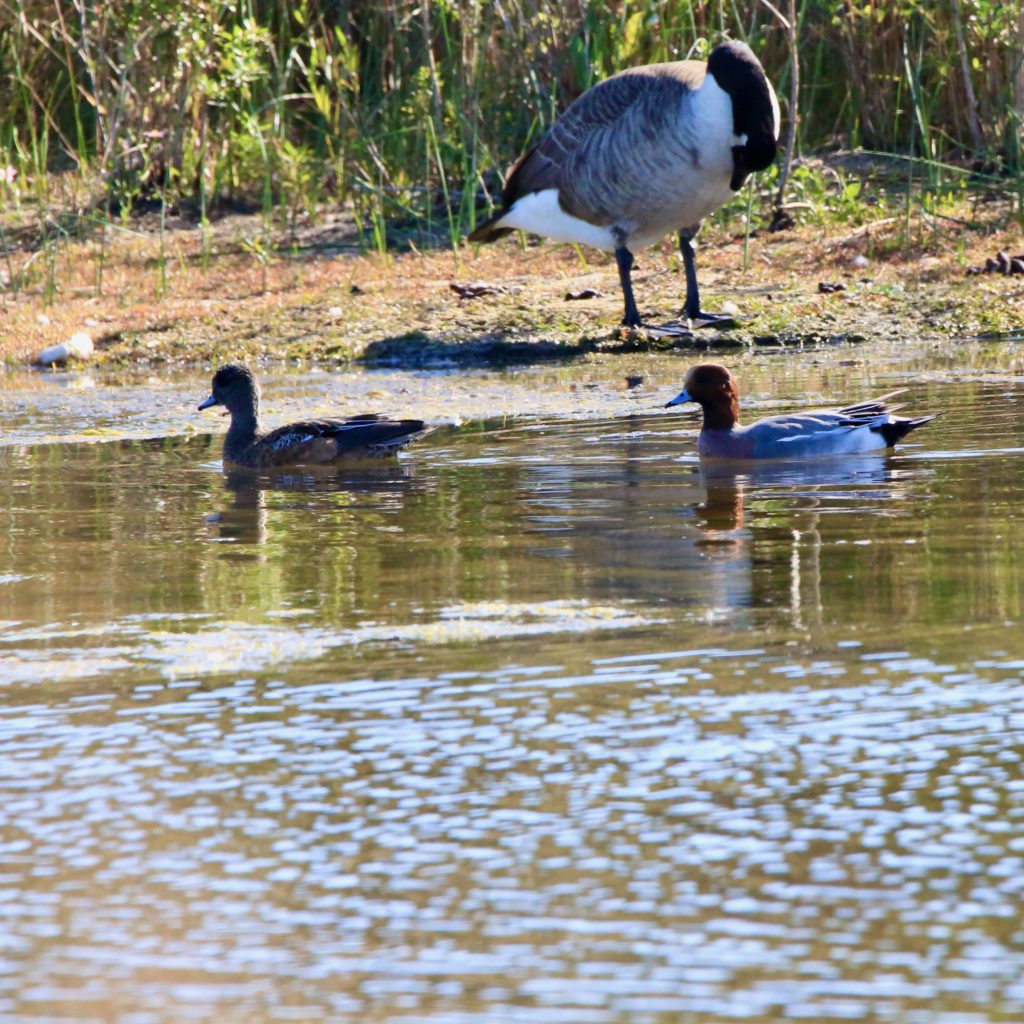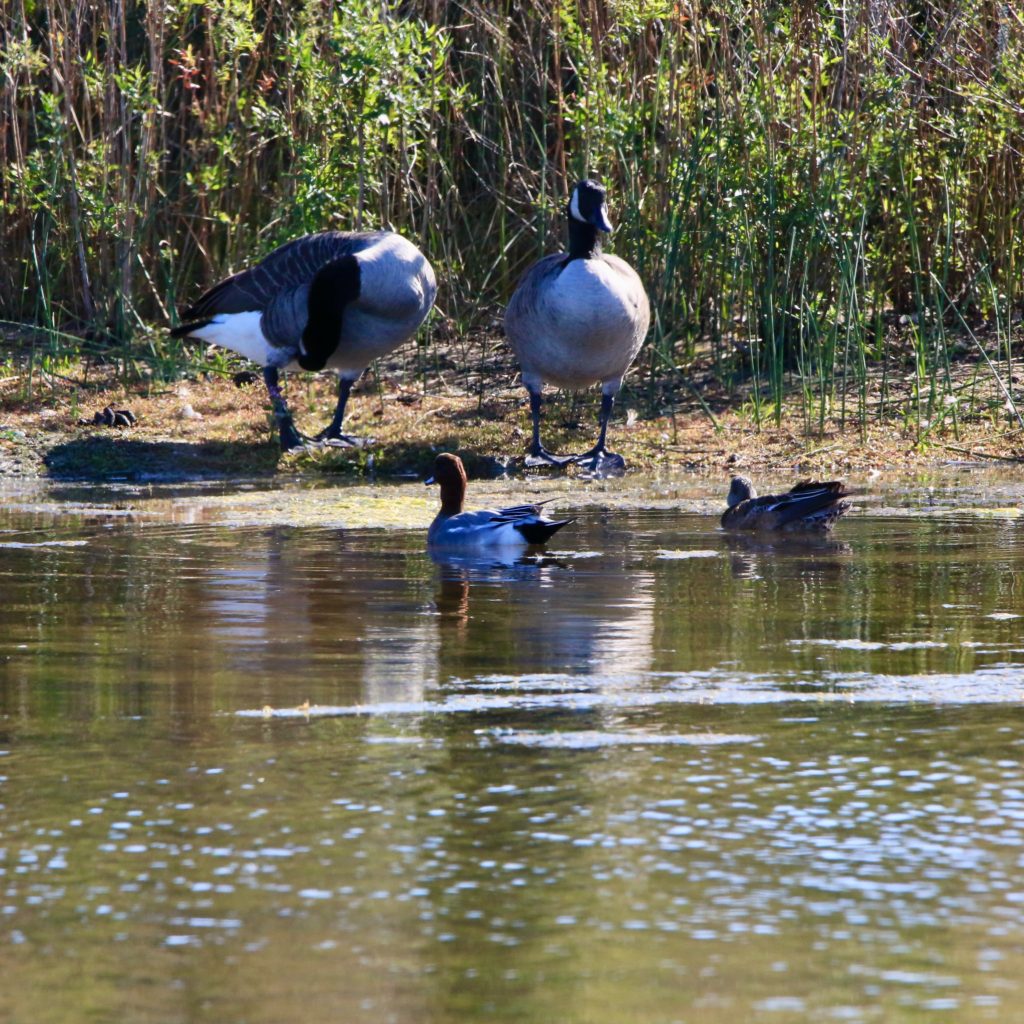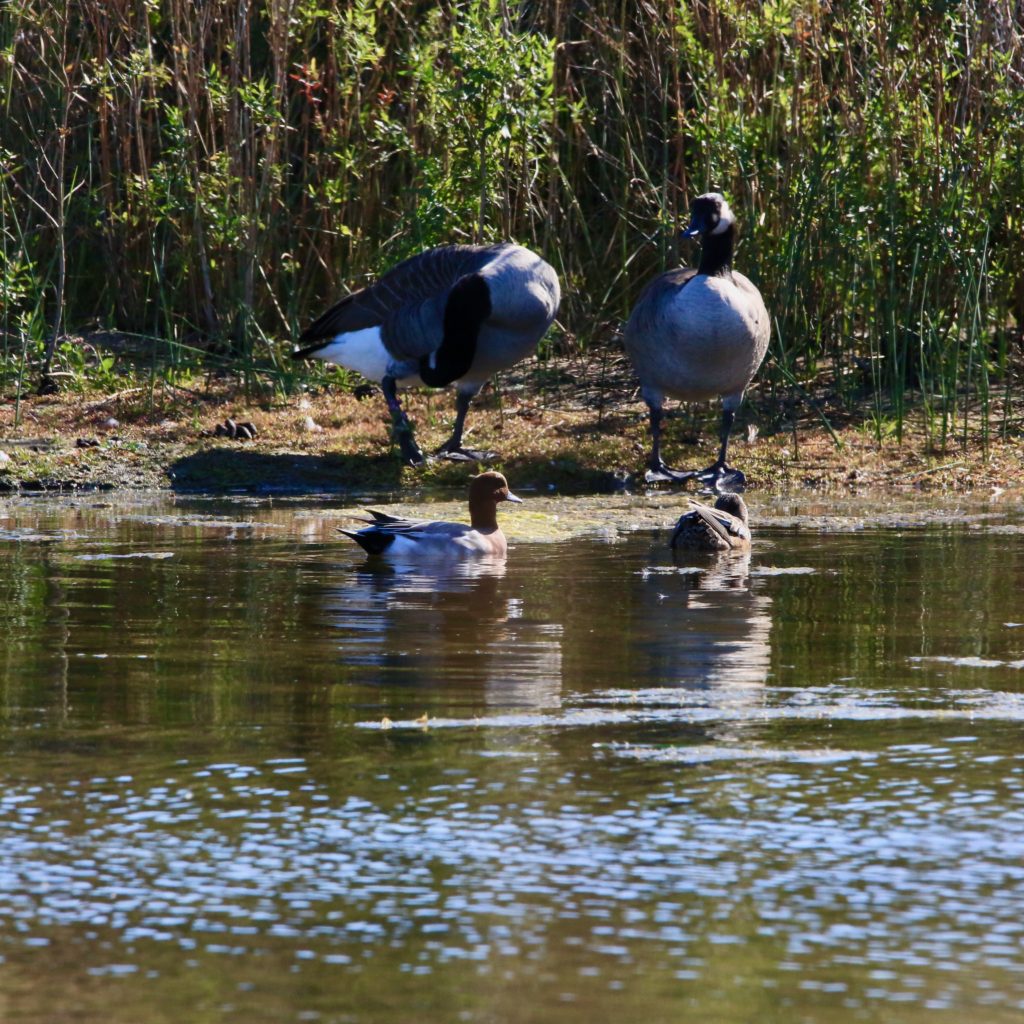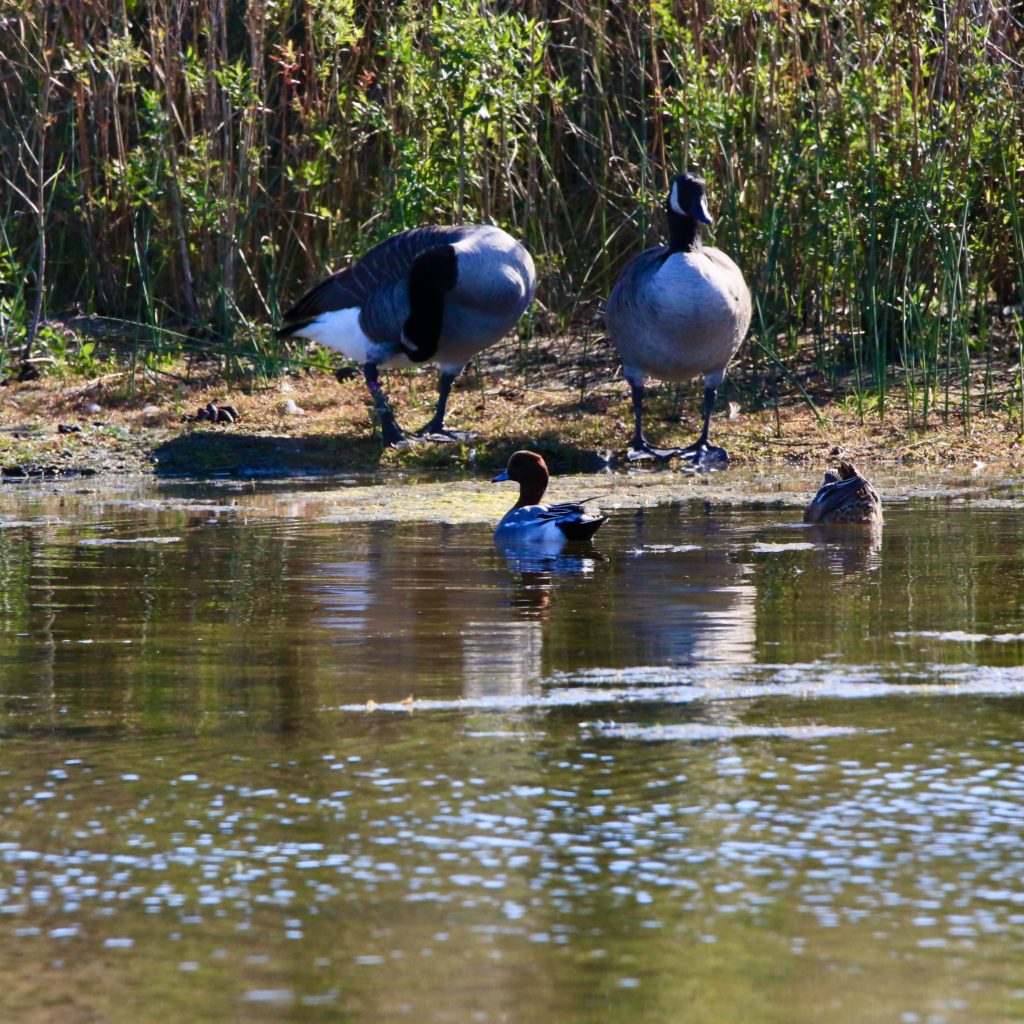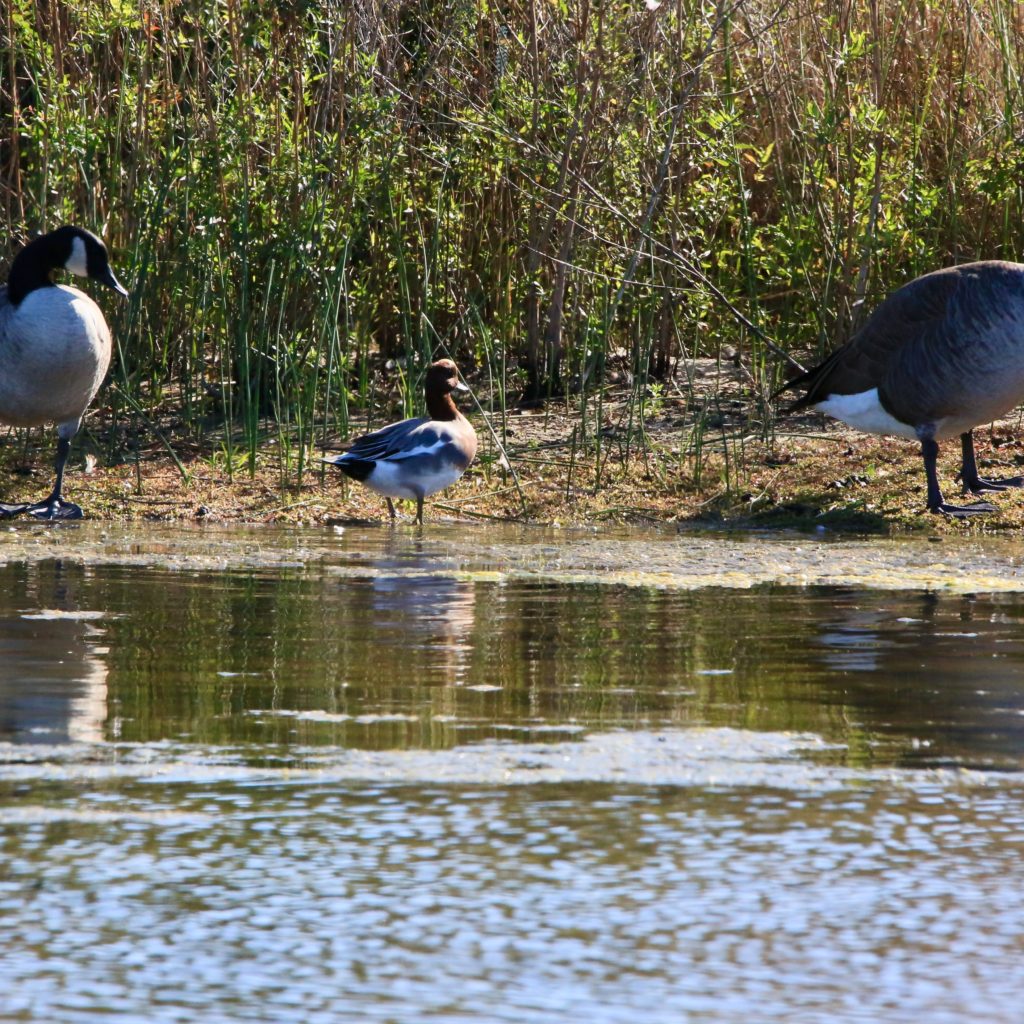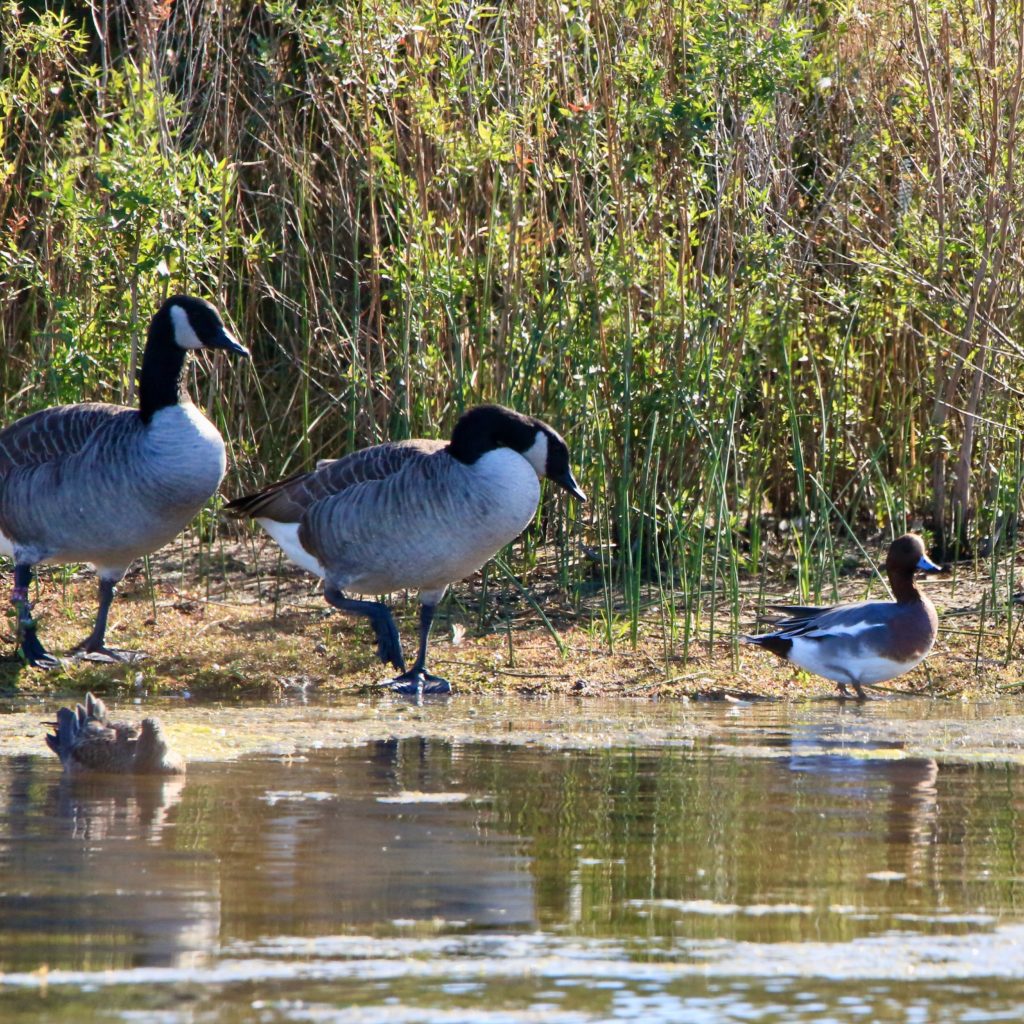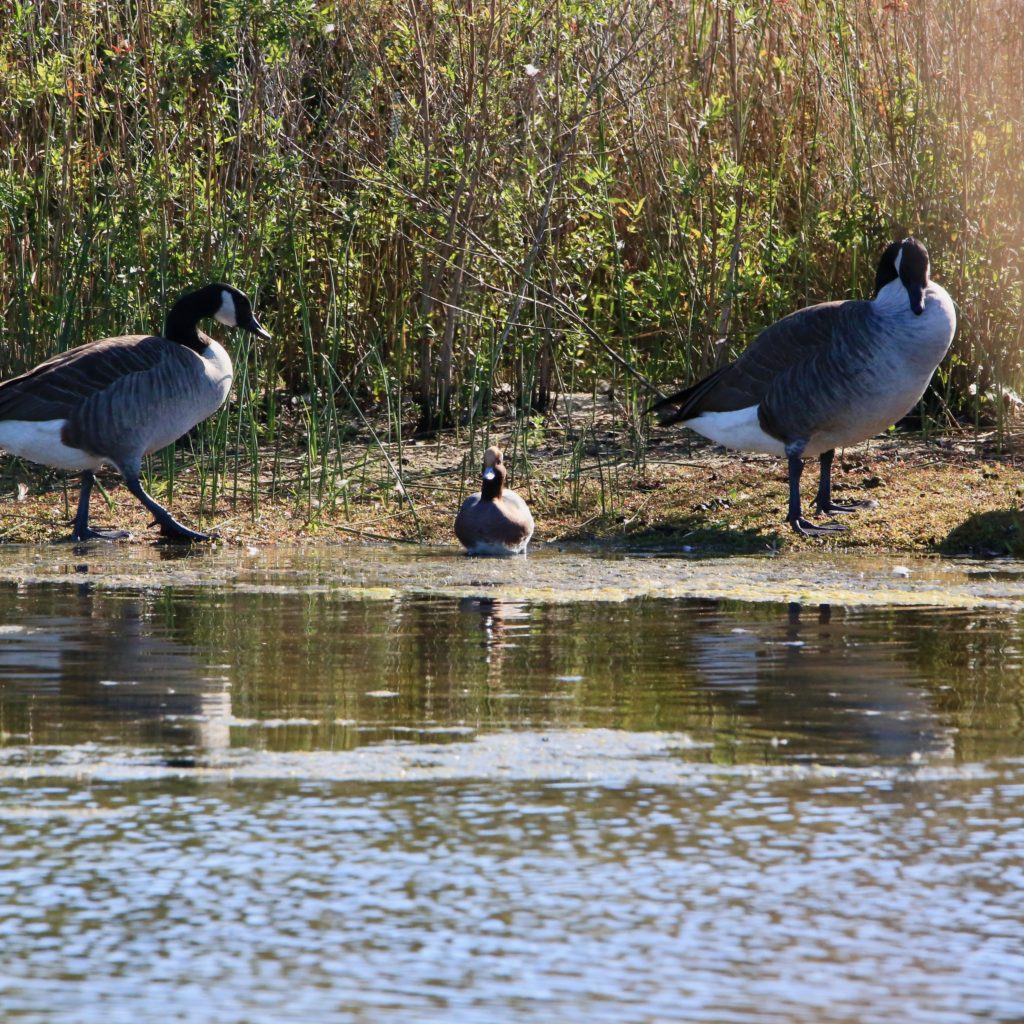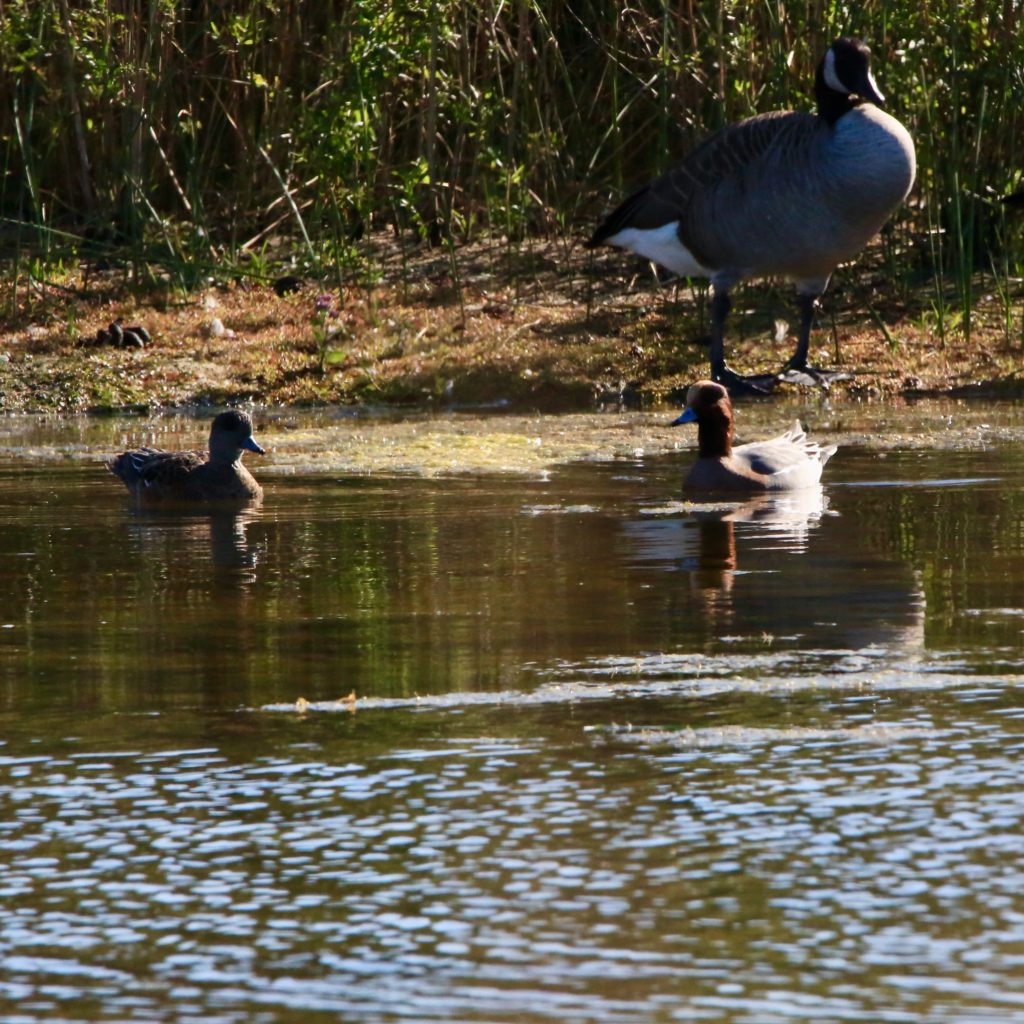
Eurasian Wigeon
A Eurasian Wigeon is a fun bird to see while bird watching. Below are some tips to help you identify Eurasian Wigeons. We have also put together a list of fun Eurasian Wigeon t-shirts, Eurasian Wigeon bird patches, birdhouses, bird feeders, binoculars, stickers, and other fun bird-watching items.
About Eurasian Wigeons
Often found in the company of American Wigeons, the Eurasian Wigeon (Mareca Penelope) is a dabbling regular visitor in the Pacific lowlands from Canada to California. It breeds in Eurasia and the Northern parts of Africa. During the winter period, it is sometimes seen in the Pacific and Atlantic coasts.
Description and Identification
These medium-sized ducks are 17-20 inches long, with a wingspan of 28-31 inches. They weigh
approximately 1.1-2.4 pounds. Male Eurasian Wigeons are more brightly colored than females. Narrow wings, small bills, and crested foreheads are physical characteristics common in
both sexes. Breeding males have black rumps, dark green speculums, gray backs and flanks,
and vibrant white patches on their wings. They also have pink breasts and white bellies. Non-
breeding male Eurasian Wigeons look identical to the females. Female Eurasian Wigeons look
almost identical in appearance to female American Wigeons. One easy method of differentiating
these ducks is to observe the difference in their shape. The characteristic call of these ducks is a
2-note whistle.
Eurasian Wigeon Color Pattern
The male Eurasian Wigeon’s head is adorned with rusty-red plumage, a buff-colored crown, and a pinkish breast on a pale gray body. In comparison, the female has a duller appearance with molted brownish-gray plumage with a white shoulder patch and a stubby blue-gray bill.
Eurasian Wigeon Size
The Eurasian Wigeon is a medium sized duck.
The relative size for both sexes is:
- Length: 16.5-20.5 in (42-52 cm)
- Weight: 17.6-33.5 oz (500-950 g)
- Wingspan: 32 inches
Eurasian Wigeon Behavior
- The Eurasian Wigeon is often seen in moving flocks with American Wigeons.
- When it comes to their feeding behavior, these birds feed by dabbling on surfaces of water and submerging both their heads and necks.
Eurasian Wigeon Food
Eurasian Wigeons are ducks that mostly feed on the surface of the water. These dabbling ducks are
known to snatch food that is brought to the surface of the water by diving ducks. If required, Eurasian
Wigeons can fly up to 16 km away for feeding. The herbivorous diet of these birds includes plants
such as duckweeds, water crowfoots, Canadian pondweeds, and fringed water lilies. They eat all
parts of various plants. Eurasian Wigeons use their dabbling skills to reach submerging vegetation.
This bird skims for plant matter like stems, leaves, and roots from water surfaces. It also sometimes grazes for food on land by waiting for diving ducks to come up to the surface with their prey then snatch it away.
Eurasian Wigeon Habitat
Eurasian Wigeons are ducks that prefer open wetlands with emergent vegetation. Lagoons, lakes,
and shallow freshwater marshes are areas they are most commonly sighted in during the breeding
season. Sometimes, these ducks can also be spotted in rivers with low currents, and streams.
Eurasian Wigeons choose water that is surrounded by trees or shrubbery. During winter these
ducks can be found gathering in saltwater marshes and tidal mudflats. Flooded Grasslands and
freshwater lagoons are habitats they choose during winter.
Eurasian Wigeons are found in marshy areas with tall vegetation, around bays, wet grasslands, and fields.
Range and Migration
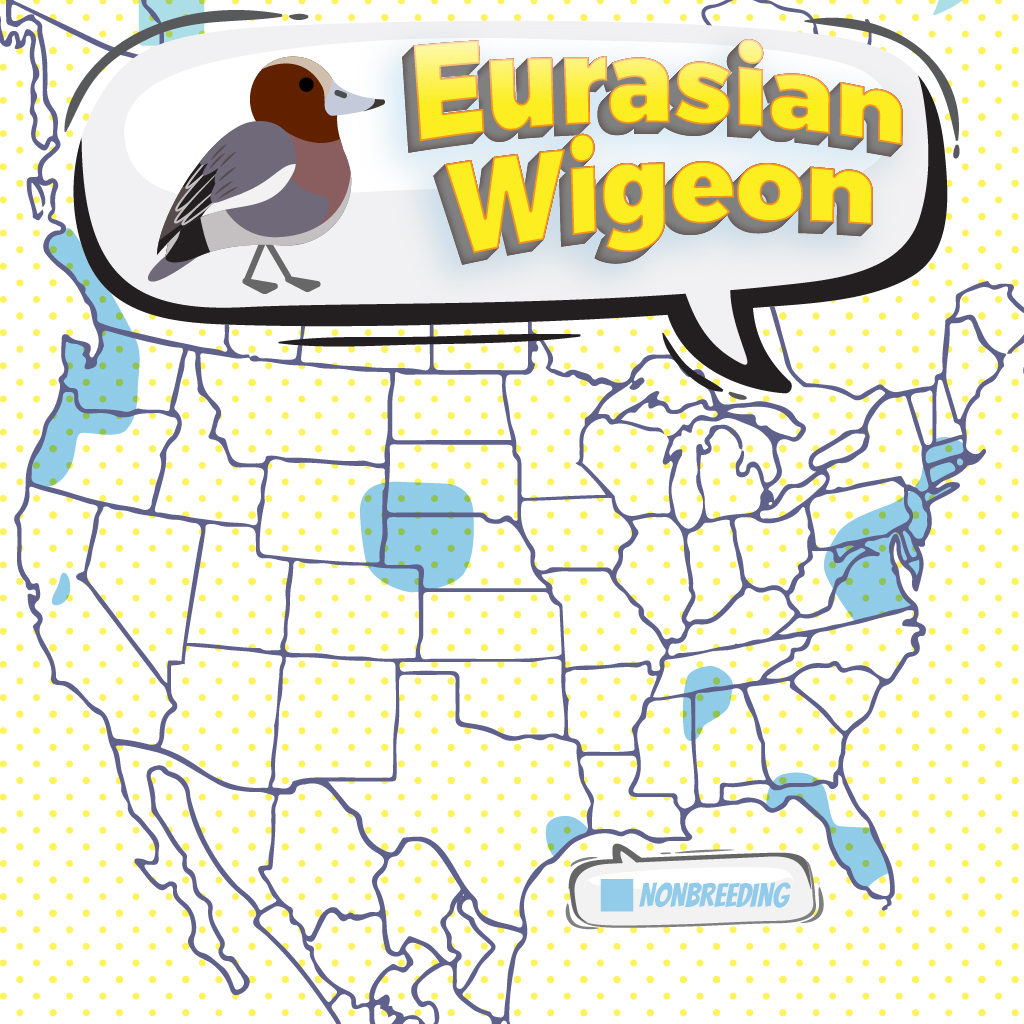
Eurasian Wigeons are widespread throughout the Palearctic region. The breeding range of these
ducks extends from Iceland to Northern Europe and Asia. With the exception of a few British
populations, these birds are mostly migratory. These birds migrate south towards India and
northern Africa, while some of them travel to Canada and America. Vagrant Eurasian Wigeons are
often found in regions in North America completely out of their normal range. Due to this vagrancy,
they can almost be found in all states and provinces in North America.
Eurasian Wigeon Life Cycle
After having made a shallow depression in the ground, the female Eurasian Wigeon lays about 7 or 8 whitish or pale buff eggs. Their nests are usually hidden by tall grass near the water body. Incubation will be done by the female for 24-25 days. After that, the ducklings leave the nest and head into the water. Even though they can feed themselves almost immediately, the female Eurasian Wigeon will stay with them until they take flight at 44-45 days old.
Eurasian Wigeon Nesting
Eurasian Wigeons are monogamous during their seasonal mating periods. They begin forming
pairs from late autumn. Several males are observed to be competing for the attention of one
female. The males use elaborate courtship displays to gain the attention of the female. Some of
these courtship displays include lifting tips of wings to display white patches, whistling while raising
their head, and displaying their crown patch to the female by lowering their heads. Eurasian
Wigeons build nest sites near water bodies on grounds that are covered with dense vegetation.
Female Eurasian Wigeons build nests by digging a small depression in the ground and lining it
with feathers and vegetation. Although males protect the females during the breeding season, they
leave immediately after the females lay eggs. Females lay about 7-11 eggs, which need to be
incubated for 22-25 days.
Ornithology
Bird Watching Academy & Camp Subscription Boxes
At Bird Watching Academy & Camp we help kids, youth, and adults get excited and involved in bird watching. We have several monthly subscription boxes that you can subscribe to. Our monthly subscription boxes help kids, youth, and adults learn about birds, bird watching, and bird conservation.
Bird Watching Binoculars for Identifying Eurasian Wigeons
The most common types of bird watching binoculars for viewing Eurasian Wigeons are 8×21 binoculars and 10×42 binoculars. Bird Watching Academy & Camp sells really nice 8×21 binoculars and 10×42 binoculars. You can view and purchase them here.
Eurasian Wigeon T-shirts
If you love the Eurasian Wigeon you should purchase a Bird Watching Academy & Camp T-shirt. To help support bird conservation we donate 10 percent to bird conservation activities.
Eurasian Wigeon Iron On Patches
Kids, Youth, and Adults love to collect our Bird Watching Academy & Camp iron-on patches. Our bird-watching patches help you keep track of the birds you have seen and identified. You can also display the patches on our Bird Watching Academy & Camp banners.
The Eurasian Wigeon is a great iron-on patch to start your collection with. The patches are durable and can be sewn on or ironed on to just about anything.
Eurasian Wigeon Stickers
Stickers are a great way for you to display your love for bird watching and the Eurasian Wigeon. We sell a monthly subscription sticker pack. The sticker packs have 12 bird stickers. These sticker packs will help your kids learn new birds every month.
Bird Feeders for Eurasian Wigeons
There are many types of bird feeders. Here are our favorite bird feeders for your backyard. We use all of these bird feeders currently. Kids will have a great time watching birds eat at these bird feeders. Using this collection of bird feeders will provide a wide variety and many types of birds.
Best Bird Houses for Eurasian Wigeons
There are many types of birdhouses. Building a birdhouse is always fun but can be frustrating. These 4 birdhouses have become our favorites. Getting a birdhouse for kids to watch birds grow is always fun. We spent a little extra money on these birdhouses but they have been worth the higher price and look great.


